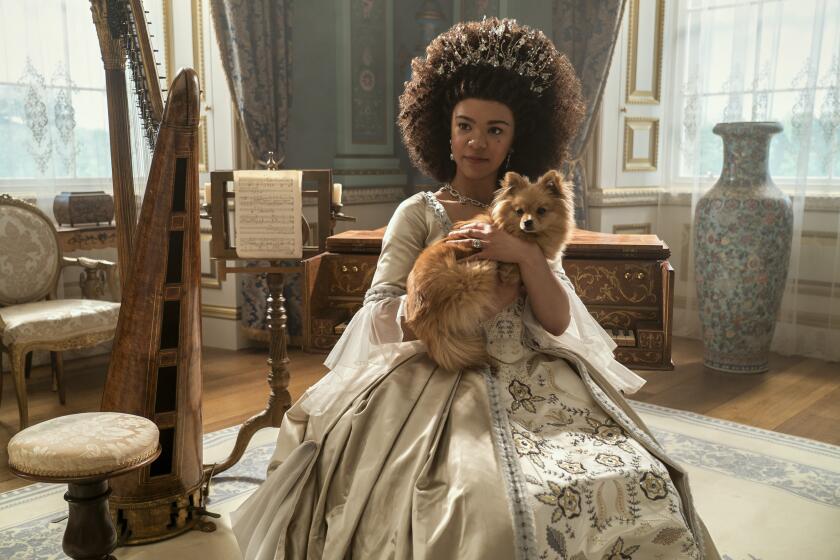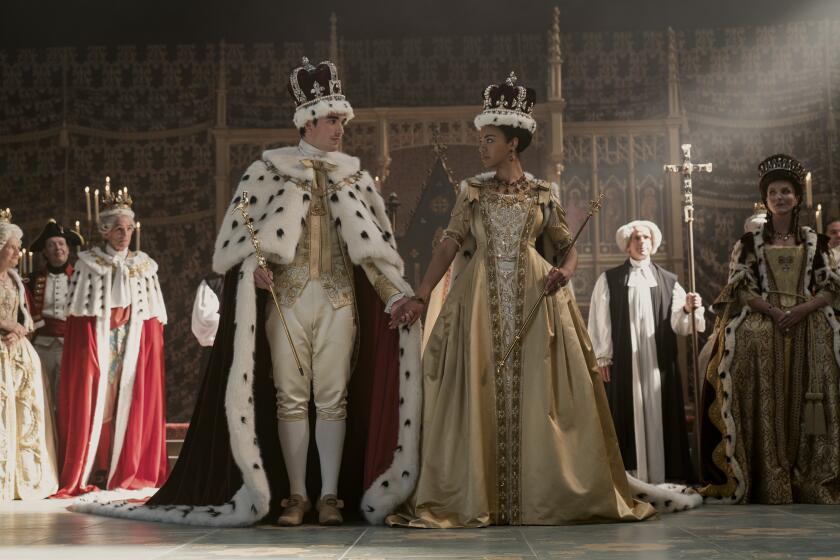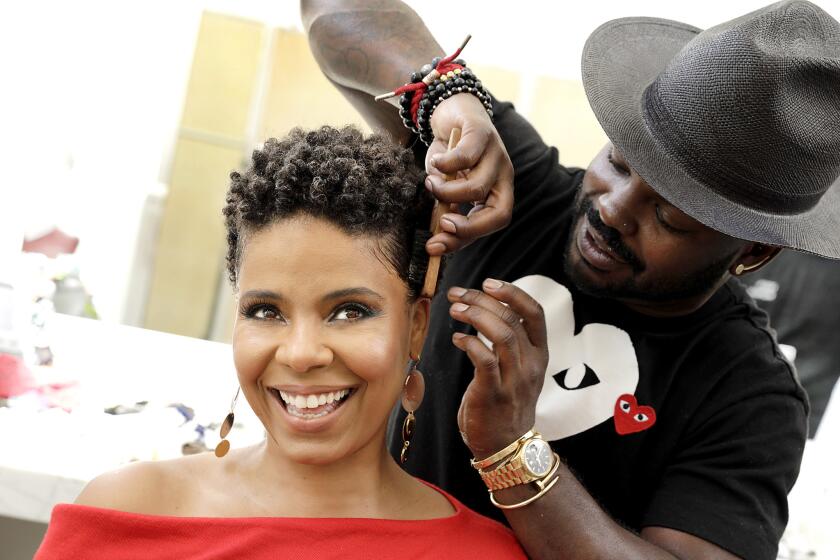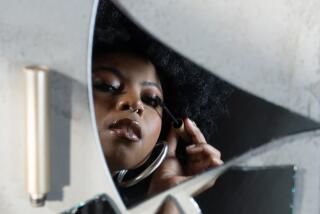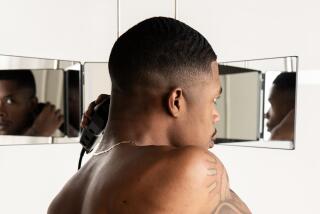Forget the romance. Natural hair and royal wigs steal the spotlight in ‘Queen Charlotte’
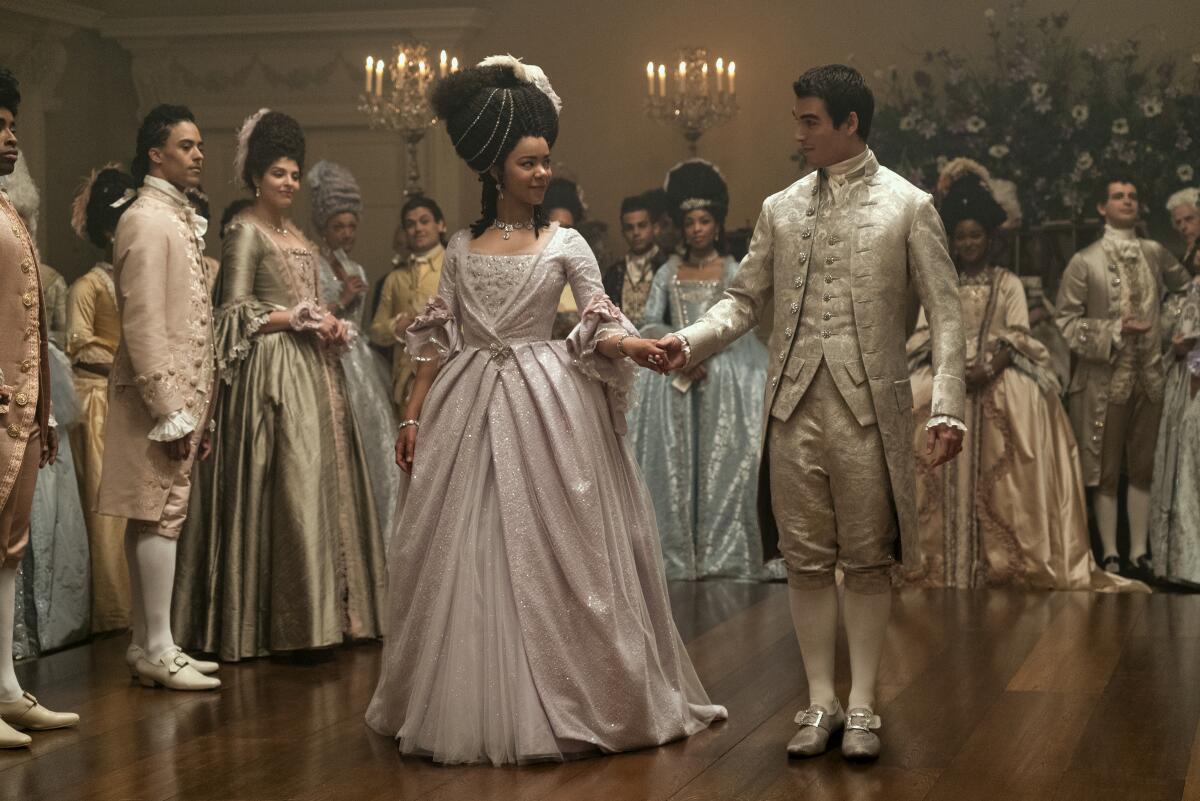
- Share via
On Netflix’s “Queen Charlotte,” the “Bridgerton’’ prequel where royalty meets romance, the natural hair and wigs worn by the actors in the series are works of art that battle for viewers’ attention as much as the characters and their onscreen dramas. Bows, meticulously handmade flowers and shiny buttons adorn wigs shaped into opulent Afros, coiled curls and braided up-dos.
“We needed to portray an intimate story,” said Nic Collins, who was the head makeup and hair designer for “Queen Charlotte.” Collins, who led a team of more than 20 hair and makeup artists, said they tried to create a hair journey for Charlotte as she moves from the Georgian era into the Regency era. “It was really important that we create a signature look for her so that you could bring in both periods and there is a flow of character,” she said.
India Ria Amarteifio stars as a young Queen Charlotte, and Golda Rosheuvel reprises her role, in the latest installment from Shonda Rhimes and Netflix.
The show builds the backstory of the titular character, portraying Charlotte during two periods: first as a teenager who marries King George III (Corey Mylchreest), and later at midlife with grown children that she is trying to marry off in order to produce a legitimate heir. India Ria Amarteifio plays the young queen and Golda Rosheuvel, reprising her role from the “Bridgerton” series, plays the older queen.
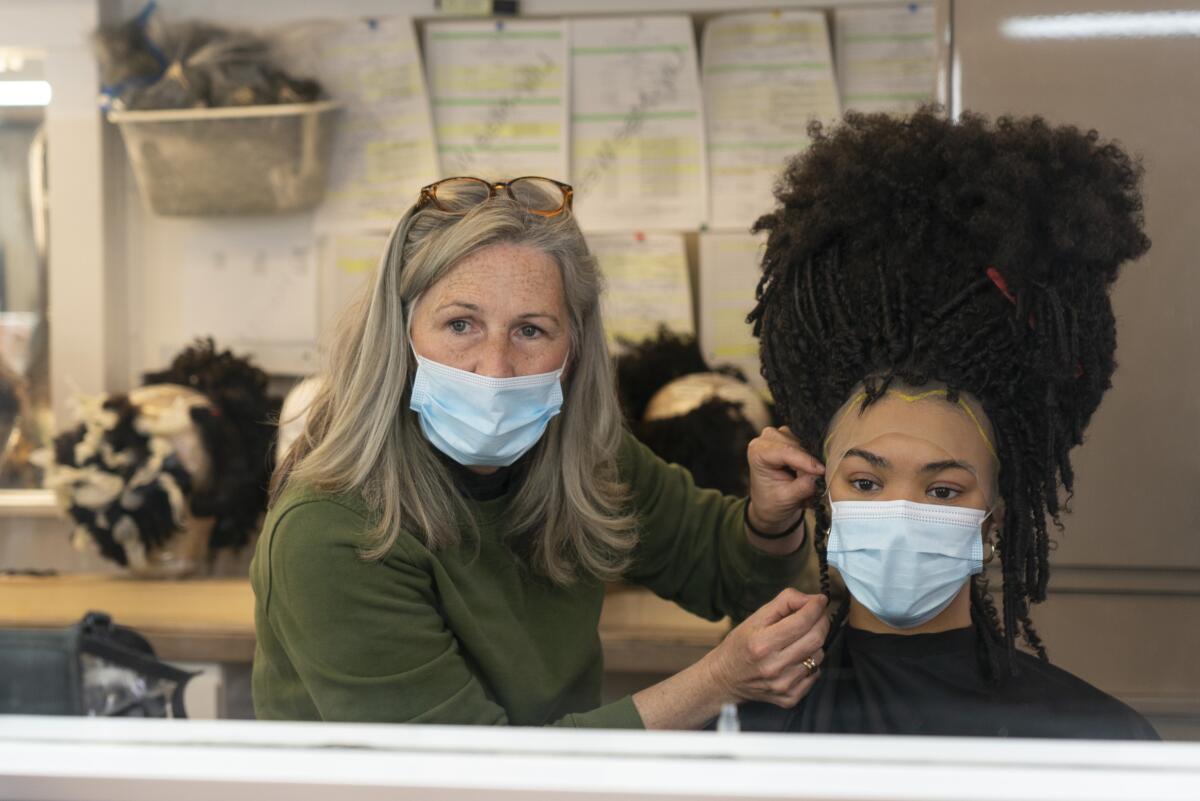
The period costumes and hairdos in the series reflect the style of the times while also giving the Black actors agency in their appearance. “Charlotte’s wigs and costumes are all set in 1813, when England was coming to the end of the Georgian era,” said Rosheuvel. “We wanted to do this to keep her and the audience rooted in the time frame but also celebrate Black hair in its natural form.”
Viewers will notice the evolution of Charlotte’s hair from when she first enters the English monarchy. In the first episode, we see young Charlotte walking through the halls of her royal manor eavesdropping on her brother Adolphus (Tunji Kasim), who arranges her marriage to George. She is wearing a satin dress layered over a stiff crinolette and a natural bun hairstyle with ringlets sitting on top. Charlotte is whisked off to England to marry the king, which is when Charlotte has her first major hair moment, Amarteifio said. At the royal wedding, we see her in an Afro, which was unlike anything the ton, or British high society, was accustomed to.
The ‘Bridgerton’ spinoff explores unanswered questions about Queen Charlotte’s racial identity and King George III’s mental health.
“We used my own natural hair tone infused with an 18th century Afro style,” Amarteifio said. “As she enters into the ton and becomes queen, we see her hair transform to become larger and more vertical each time we see her. Her hairstyles are like their own character.”
As Charlotte attempts to adjust to her marriage, the throne and her new living quarters (separate from the king), she and George get in a heated argument, foreshadowing his mental health issues. Charlotte locks herself in her room and we see her with her hair blown out in its most natural and raw state. “India was always wearing a wig, even her natural hair when you see the hair down in the bed. That’s a wig,” Collins said.
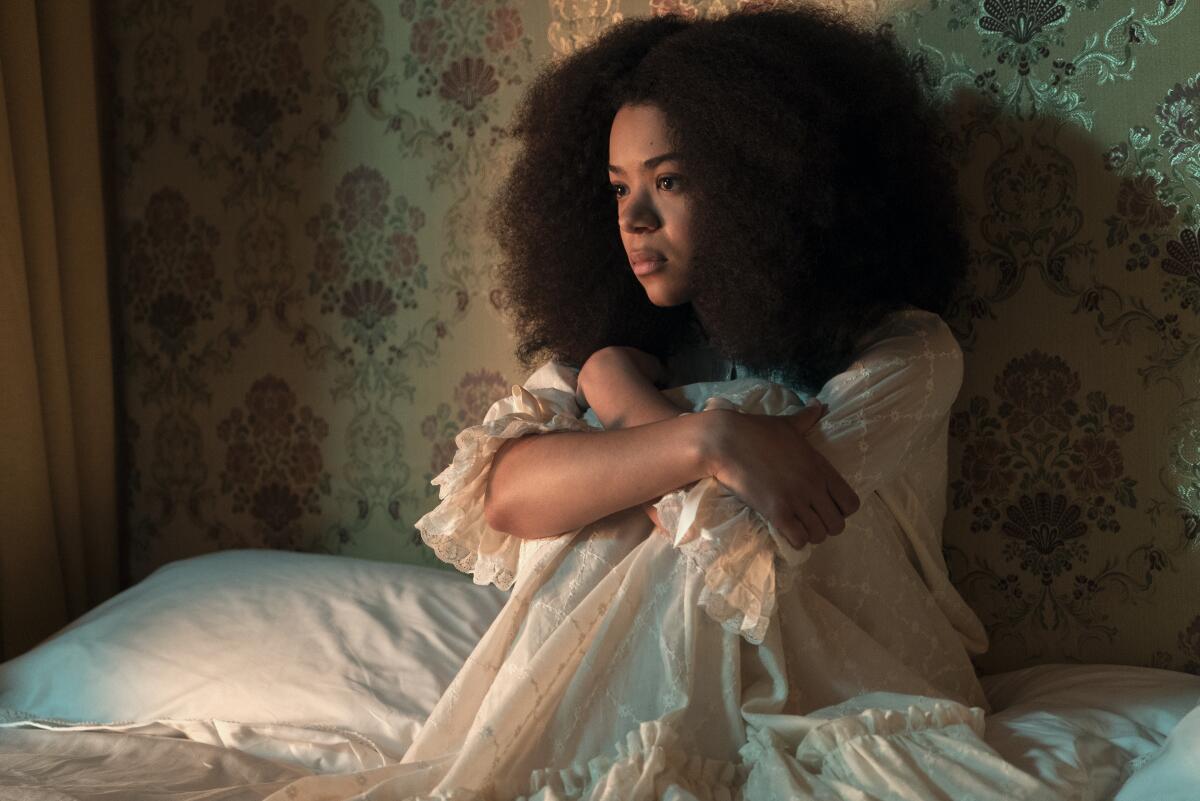
In scenes of the coronation and a ball in Episode 3, there are dozens of extras with unique hairdos. Women are seen in sky-high wigs with Afro hair braided upward, seemingly defying the law of physics, while men wear powdered wigs.
“If it’s not their natural hair, all characters are wearing wigs because we wanted to be cautious and not damage the lead’s natural hair,” Collins said. “Some wigs were made out of eight pieces and they were tightly glued to their scalps. There must have been over a thousand wigs. We made everything in house and everybody’s style was based on where they were in the season.”
In the final episode, during one of young Charlotte’s pivotal scenes, her hair makes a statement about her rule. Her Afro stands larger and is more noticeable than her jeweled crowns. The more Charlotte became comfortable with her position as queen, the more lofty and grandiose her wigs became. It “veers over more to the style of older Charlotte,” Collins says. “So that’s the start of her progression into womanhood.”
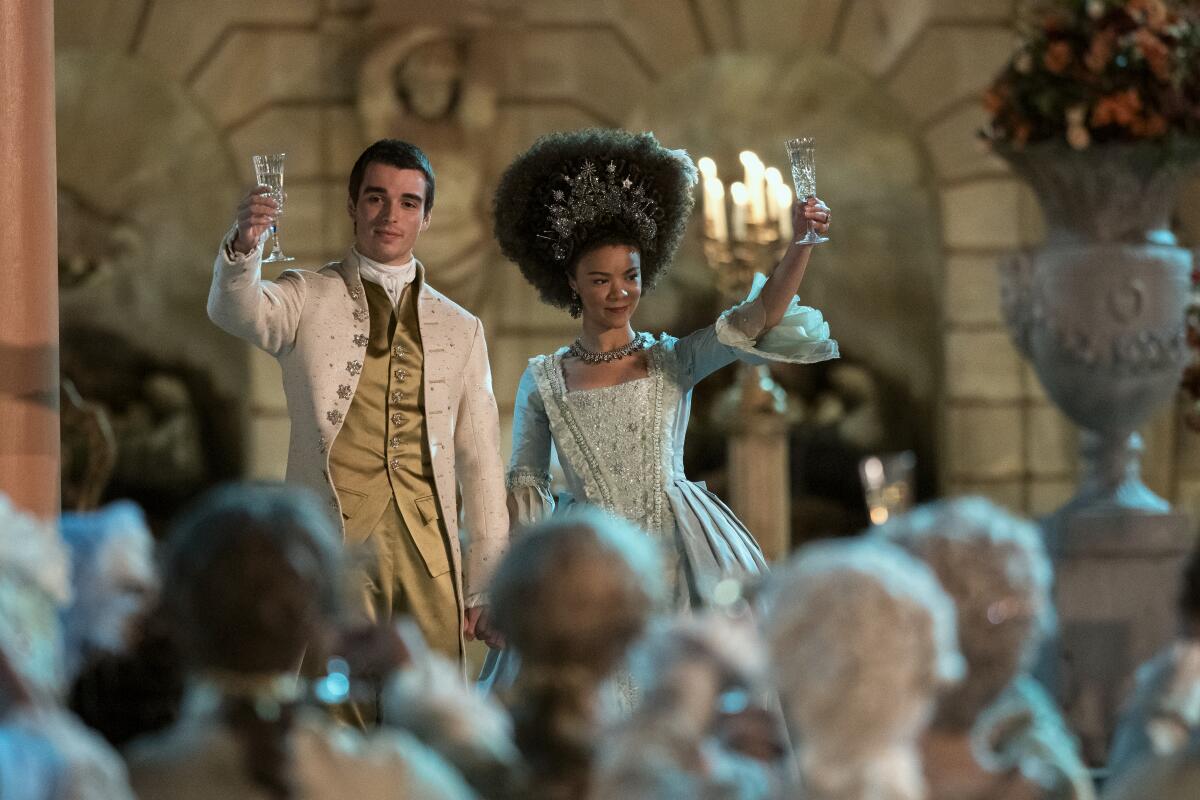
Marc Pilcher, who died in 2021, was the original hair and makeup artist on “Bridgerton” who laid the visual groundwork for the regal hair in the series. Though Collins has her own take on Charlotte’s hair in this series, it recalls Pilcher’s work, like the bow wig. “With our Regency Charlotte, her hair grows just like the bow wig,” she said. “That one wig is made purely out of bows, which is an ode to ... Marc.”
“The wigs are an integral part of who Charlotte is,” Rosheuvel said. “They are a statement of pride, of womanhood, of being unapologetic and standing firm in who she is and what she knows. They help inform the way she stands, walks and sits.
At the Los Angeles premiere, Rosheuvel elaborated on what it meant to have natural hair used in the show, saying she teared up in the makeup and hair trailer. “I bring my whole self to a role and hair is a really integral part of that. As a biracial woman, my hair has to be considered and incorporated into the art form; it’s key to moving forward as artists and as an industry that is telling all our stories.”
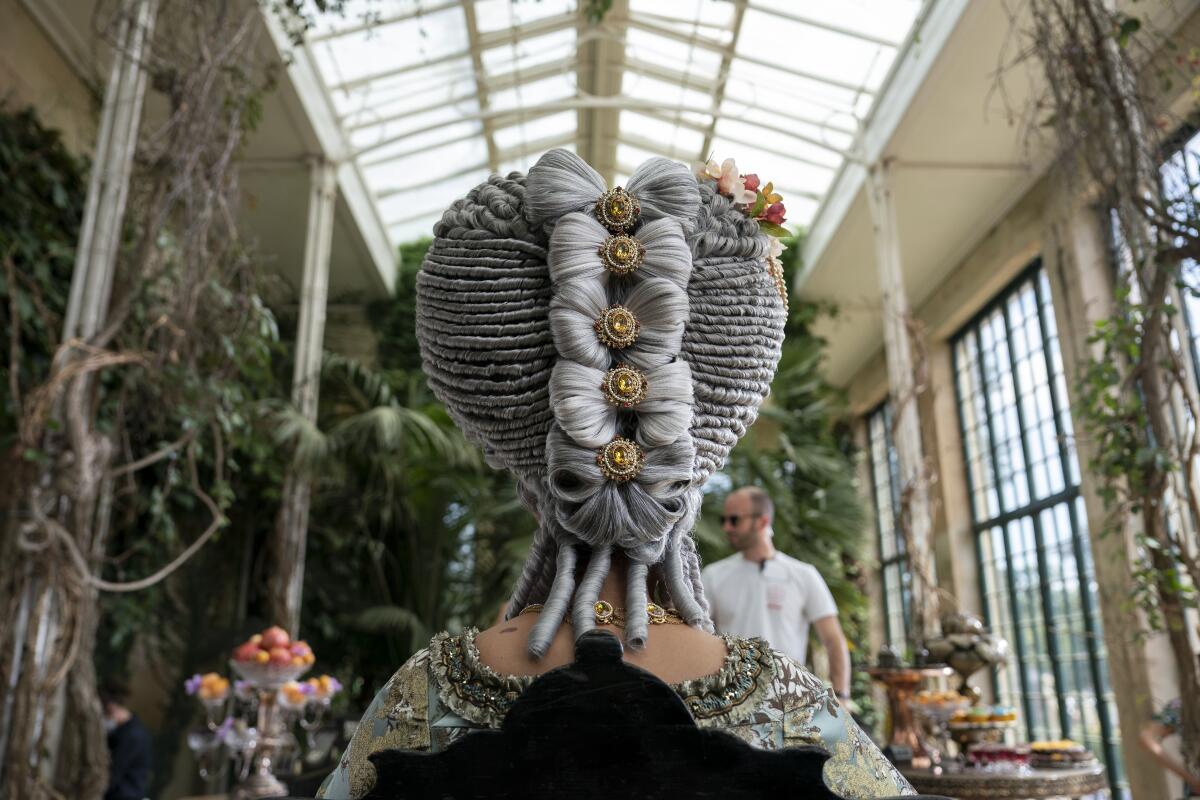
Arsema Thomas, who plays young Agatha Danbury — Charlotte’s friend and confidant — in the prequel, said in an interview at the premiere that her friendship with Amarteifio grew in between takes and in conversations about hair care. She said that seeing themselves mirrored in their characters helped build a strong bond.
“I think there is something in the character’s hair and dress that is extremely important for these women because these tend to be the only places where they can exercise control as women,” said Thomas, as she dwelt on the influence of vanity and the role it continues to play today. “The amount of suppression these women must have endured means that these small avenues of release tend to be extremely valuable and important to them.”
Because “Queen Charlotte” and the rest of the “Bridgerton” series offers a revisionist history, there is little to no imagery of people of color from that era to reference, allowing the minds behind the scenes to create their own interpretations of what the characters would look like.
“That is part of the world-building and based on the hairstyles that have been described and illustrated from history out of Africa,” Thomas said. “I think it makes sense that natural hair would have been on full display like we see throughout this season.”
More to Read
The complete guide to home viewing
Get Screen Gab for everything about the TV shows and streaming movies everyone’s talking about.
You may occasionally receive promotional content from the Los Angeles Times.
